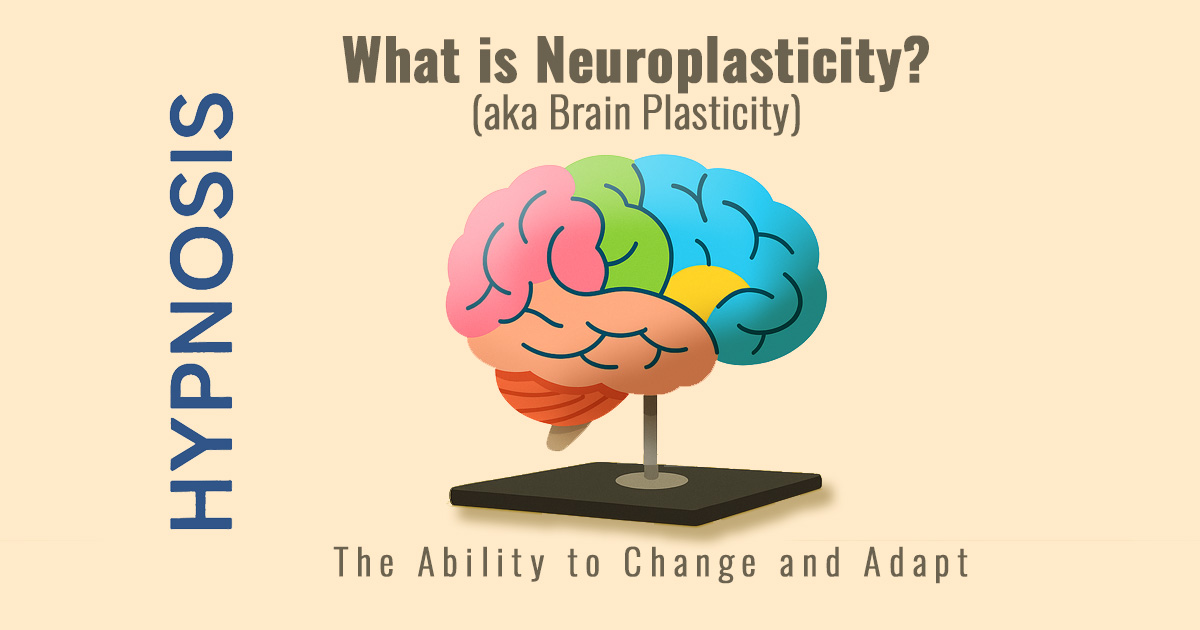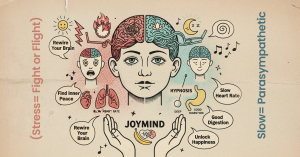Neuroplasticity, also known as brain plasticity
Plasticity in the brain, is the revolutionary concept that the human brain can rewire itself throughout life. Contrary to outdated beliefs that brain development halts in early childhood, researchers now confirm that the brain remains dynamic—constantly reshaped by our actions, thoughts, habits, and experiences (Kolb & Gibb, 2011).
At Joymind, we integrate this powerful concept into our clinical hypnotherapy programs. We believe that hypnotherapy—especially when applied with intention and structure—activates and directs the neuroplasticity of the brain, making it possible to change outdated emotional, cognitive, and behavioral patterns.
This article explores what neuroplasticity means, how hypnosis therapy helps unlock its potential, and what kinds of real-life transformations can occur when old mental programs are updated through trance-based interventions.
What Is Neuroplasticity?
Neuroplasticity, or plasticity and the brain, refers to the brain’s ability to change its structure and function in response to new experiences, learning, memory formation, or recovery from injury (Draganski et al., 2006). There are two key aspects:
Synaptic plasticity: Changes in the strength of connections between neurons.
Structural plasticity: The formation of new pathways and even new neurons.
Brain neuroplasticity explains how individuals recover from strokes, acquire new languages later in life, or release deeply ingrained traumas. Importantly, though neuroplasticity is always occurring, the quality and direction of that change can be intentionally shaped. This is where hypnosis becomes a powerful ally.
How Hypnosis Works
Hypnosis, sometimes misunderstood in popular culture, is in fact a focused, highly relaxed, and receptive mental state. Far from being unconscious, clients are awake but have momentarily softened their critical filters—allowing direct communication with the subconscious mind.
Neuroimaging shows that hypnosis impacts several key brain regions: the anterior cingulate cortex (attention regulation), the default mode network (self-referential thought), and the prefrontal cortex (decision-making and emotional regulation) (Landry, Lifshitz, & Raz, 2017).
At Joymind, our clinical hypnosis method:
Calms the sympathetic nervous system, reducing anxiety and creating emotional safety.
Accesses subconscious memories, revealing core beliefs driving behavior.
Offers therapeutic reframes to support new brain plasticity pathways.
Hypnosis as a Catalyst for Neuroplasticity
Hypnotherapy and brain plasticity are deeply intertwined. When someone is in a hypnotic state, the brain becomes more suggestible and open to change—setting the stage for neuroplastic rewiring.
According to Bargh and Chartrand (1999), the subconscious governs up to 95% of our behavior. Hypnosis provides direct access to this hidden engine room of belief and habit. Under trance, a client may revisit a traumatic memory, reinterpret its meaning, and emotionally rehearse new responses. These new patterns activate mirror neurons and create new neural pathways (Rizzolatti & Craighero, 2004).
For example, a person with performance anxiety might carry an unconscious belief of inadequacy. In hypnosis, that belief is visualized as outdated and replaced with symbols of capability and calm. Over time, this mental rehearsal reinforces a new internal reality—one that becomes behaviorally and emotionally embodied.
Reframing: Turning Obstacles into Opportunities
Reframing, a core part of our work, is where hypnotherapy neuroplastic change becomes tangible. Rather than denying or suppressing the past, we help clients reinterpret its meaning through guided imagery, metaphor, and storytelling. In neuroscience, this is called experience-dependent plasticity—the brain physically changes based on what it experiences (or re-experiences) in new ways.
This technique is especially effective for:
Anxiety and depression
PTSD and trauma
Addictions
Public speaking or performance anxiety
Limiting beliefs about self-worth or intimacy
One Joymind client said, “It wasn’t just that I felt better. It was like my memory had a new color—like I could see it with different eyes.” That is brain neuroplasticity in action.
The Joymind Method: Structured Neuroplastic Transformation
At Joymind, our protocol for hypnosis and neuroplasticity has been refined through more than 15,000 sessions. We combine:
Dave Elman inductions to enter deep states rapidly
Ericksonian metaphor to bypass resistance
Cognitive and somatic integration techniques to solidify change
Our 5-phase method:
Awareness – Identifying outdated beliefs and reactions
Relaxation – Establishing nervous system safety
Reimagination – Visualizing new responses and possibilities
Repetition – Reinforcing neural change through practice
Integration – Embodying transformation in daily life
Benefits of Hypnotherapy-Facilitated Neuroplasticity
Clients who engage in our method often experience:
Decreased anxiety and depression
Greater focus and clarity
Emotional stability and resilience
Relief from trauma and fear-based reactions
Improved sleep and stress management
Motivation, goal clarity, and achievement
Renewed intimacy and relational strength
These benefits are more than psychological—they are evidence of actual rewiring in the brain. It’s the embodiment of hypnosis rewiring brain processes at a cellular and emotional level.
You Can Rewire Your Reality
What is neuroplasticity? It is proof that your brain is not fixed—it’s fluid. And hypnosis is the tool that lets you direct that change consciously. Whether you’re seeking freedom from pain or envisioning a new future, hypnotherapy and brain plasticity offer a pathway to meaningful and measurable transformation.
To begin your personalized neuroplastic transformation, visit the clinical team at Joymind and schedule your consultation today.
References
- Bargh, J. A., & Chartrand, T. L. (1999). The unbearable automaticity of being. American Psychologist, 54(7), 462–479. https://doi.org/10.1037/0003-066X.54.7.462
- Draganski, B., Gaser, C., Busch, V., Schuierer, G., Bogdahn, U., & May, A. (2006). Neuroplasticity: Changes in grey matter induced by training. Nature, 427(6972), 311–312. https://doi.org/10.1038/427311a
- Kolb, B., & Gibb, R. (2011). Brain plasticity and behaviour in the developing brain. https://pmc.ncbi.nlm.nih.gov/articles/PMC3222570/
- Landry, M., Lifshitz, M., & Raz, A. (2017). Brain correlates of hypnosis: A systematic review and meta-analytic exploration. https://doi.org/10.1016/j.neubiorev.2017.02.020
- Rizzolatti, G., & Craighero, L. (2004). The mirror-neuron system. https://pubmed.ncbi.nlm.nih.gov/15217330/
- Joymind Research. (n.d.). Clinical outcomes and session protocols. https://joymind.com/research/
- Verywell Mind. (n.d.). What is brain plasticity? https://www.verywellmind.com/what-is-brain-plasticity-2794886
- Harvard Health. (n.d.). Tips to leverage neuroplasticity. https://www.health.harvard.edu/mind-and-mood/tips-to-leverage-neuroplasticity-to-maintain-cognitive-fitness-as-you-age
- Mayo Clinic Press. (n.d.). The power of neuroplasticity. https://mcpress.mayoclinic.org/healthy-aging/the-power-of-neuroplasticity-how-your-brain-adapts-and-grows-as-you-age/
- Atlassian. (n.d.). Train your brain. https://www.atlassian.com/blog/productivity/neuroplasticity-train-your-brain
- BBC Reel. (n.d.). How to rewire your brain. https://www.bbc.com/reel/video/p098v92g/neuroplasticity-how-to-rewire-your-brain
















